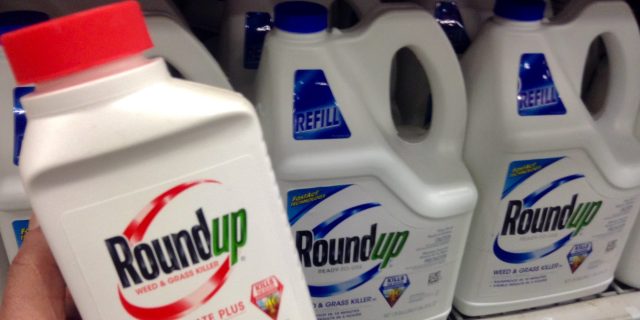06
Jan
Long-Term Roundup Exposure Found to Harm Keystone Wildlife Species

(Beyond Pesticides, January 6, 2021) Long-term exposure to formulated Roundup and glyphosate results in significant harm to wildlife species that form the bottom of aquatic food chains, according to a study published in Microbiome by researchers at University of Birmingham, UK. The water flea Daphnia spp. often functions as a keystone species in lakes and ponds, and because of its ecological importance is frequently used as an indicator species in toxicity tests performed by pesticide regulators. Lead author Luisa Orsini, PhD, notes that most of this testing is flawed by limitations in its scope.
“The problem is that much of the evidence is rooted in outdated toxicity tests which only look at the number of animals that die on exposure to extremely high concentrations of these chemicals,” Dr. Orsini said. “These tests also overlook the pathological effects arising from long-term exposure to low doses. What we’re proposing is that toxicity is measured by looking at what happens to the animal at a molecular and fitness level following long-term exposure, which encompasses the entire animal life cycle.”
Dr. Orsini and her research team exposed populations of Daphnia magna to the maximum contaminant level (1 mg/L) of both the formulated product Roundup, and technical grade glyphosate established by the US Environmental Protection Agency (EPA), over the course of the animal’s life. The team then investigated a range of impacts and adverse changes that occurred as a result, including fitness burden, genotoxicity (damage to DNA), and alterations within the water flea’s gut microflora. A control population received no chemical exposure.
Changes in fitness were seen for every trait except mortality. Roundup delayed average age of sexual/reproductive maturity, reduced size at maturity, decreased the total number of offspring produced, and increased developmental failure – as determined by the number of aborted eggs, and juveniles borne dead.
Researchers also observed damage to DNA, with glyphosate and Roundup showing only slight differences in affected pathways. One of Daphnia’s benefits as a test species is that its genetic makeup overlaps with a number of other animal species. As such, the paper notes that their genotoxic findings have implications for other animals. “Conserved gene domains, which may be of potential concern as targets for glyphosate in other species, include three main categories: liver metabolism (lipids and glucose), inflammation pathways (leukocytes), and collagen degradation, responsible for the repair of wounds and tissue remodeling,” the study reads.
Roundup and glyphosate were also found to indirectly alter both the makeup and total number of microbiota in the water flea’s gut. These changes were correlated with alterations to the way fat and carbon are metabolized, as well as the animal’s detoxification pathways.
Previous research has identified differences between formulated Roundup and its active ingredient glyphosate, with indications that the formulated product is more toxic. With the present study, although the two materials displayed some slight differences in effects, chronic exposure to both compounds resulted in significant harm.
Dr. Orsini notes the context in which her team’s research was conducted. “Research surrounding Roundup has been controversial since it first appeared on the market in the 1970s,” the lead author said. “Claims that it causes diseases and disorders ranging from cancer to autism stack up against industry-paid reports arguing that the product has no untoward effects.”
There has been a concerted effort by Bayer Monsanto and the agrichemical industry to spin and misrepresent the science on glyphosate and other pesticides to the public. Regulators like the EPA have been accused by advocates of running interference for the industry, as it recently reregistered the chemical for another 15 years, glossing over a range of adverse impacts.
Late last year, Beyond Pesticides joined with a coalition farmworkers, farmers, and conservationists to challenge the agency’s reapproval of glyphosate. “Glyphosate use and resulting exposures represent a serious threat to the safety of people and the environment, including many hundreds of endangered species—facts astonishingly ignored by regulators,” said Jay Feldman, executive director of Beyond Pesticides, a plaintiff in the case. “It is unfortunate that it takes a lawsuit like this to force EPA to carry out its responsibility in the face of a mountain of scientific findings that document glyphosate’s harm,” Mr. Feldman added.
As the present study shows, the effects of glyphosate go far beyond its direct, acute impacts. Degradation of Daphnia populations at the bottom of the food chain due to chronic exposure increases risk of catastrophic trophic effects in aquatic communities. Join Beyond Pesticides in fighting for a future that eliminates glyphosate as well as all other highly toxic pesticides in favor of safer, sound, organic practices. It is not enough to simply ban glyphosate – through organic practices we can eliminate that conditions that may have required its use in the first place.
All unattributed positions and opinions in this piece are those of Beyond Pesticides.










